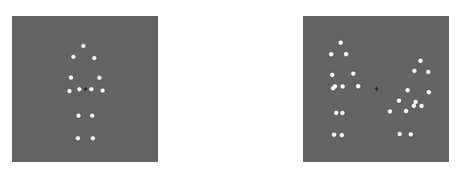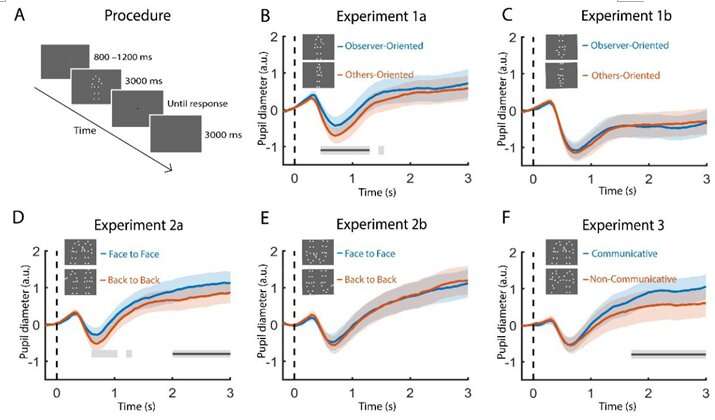
Humans are endowed with intrinsic social motivation to interact with others and to maintain social relationships. It has been demonstrated that pupil size may serve as a window for personal motivations, such as sex, money and etc. However, to date, it remains elusive regarding whether pupil size gains an insight into social motivation, in particular social interaction.
Recently, Prof. Yi Jiang and his colleagues from Institute of Psychology of the Chinese Academy of Sciences systematically examined whether human’s propensity for social interaction can be reflected by the eyes.
“The social interaction signals people are inundated with everyday consist of either an agent who sends an interactive invitation towards us (a “second-person” perspective) or pairs of people who are engaged in reciprocal communications (a “third-person” perspective),” said Prof. Yi.
Using the pupillary assessment method, the researchers recorded the observers’ pupil size when they were viewing these social interaction signals.
The results showed that the observers’ pupil size was significantly enlarged either when they viewed a single agent that sent interactive intention towards them versus towards others, or when they viewed facing agents engaged in social interaction as compared with non-facing dyads.
By contrast, such pupil dilation effects disappeared when these social interaction entities were inverted. Moreover, this pupil dilation effect relied on the correct understanding of the communicative intention of the interactive agents.

Taken together, these findings provide robust evidence that perception of social interaction unfolds through pupil dilation, which sheds light on the visual system’s innate sensitivity to social interaction.
More importantly, the pupillary response to social interaction information potentially offers a convenient biomarker to facilitate the early diagnosis of social cognitive disorders, for instance, autism.
This study entitled “The eyes have it: Perception of social interaction unfolds through pupil dilation” has been online published on July 1 in Neuroscience Bulletin.
Zhang Nannan, Chinese Academy of Sciences

